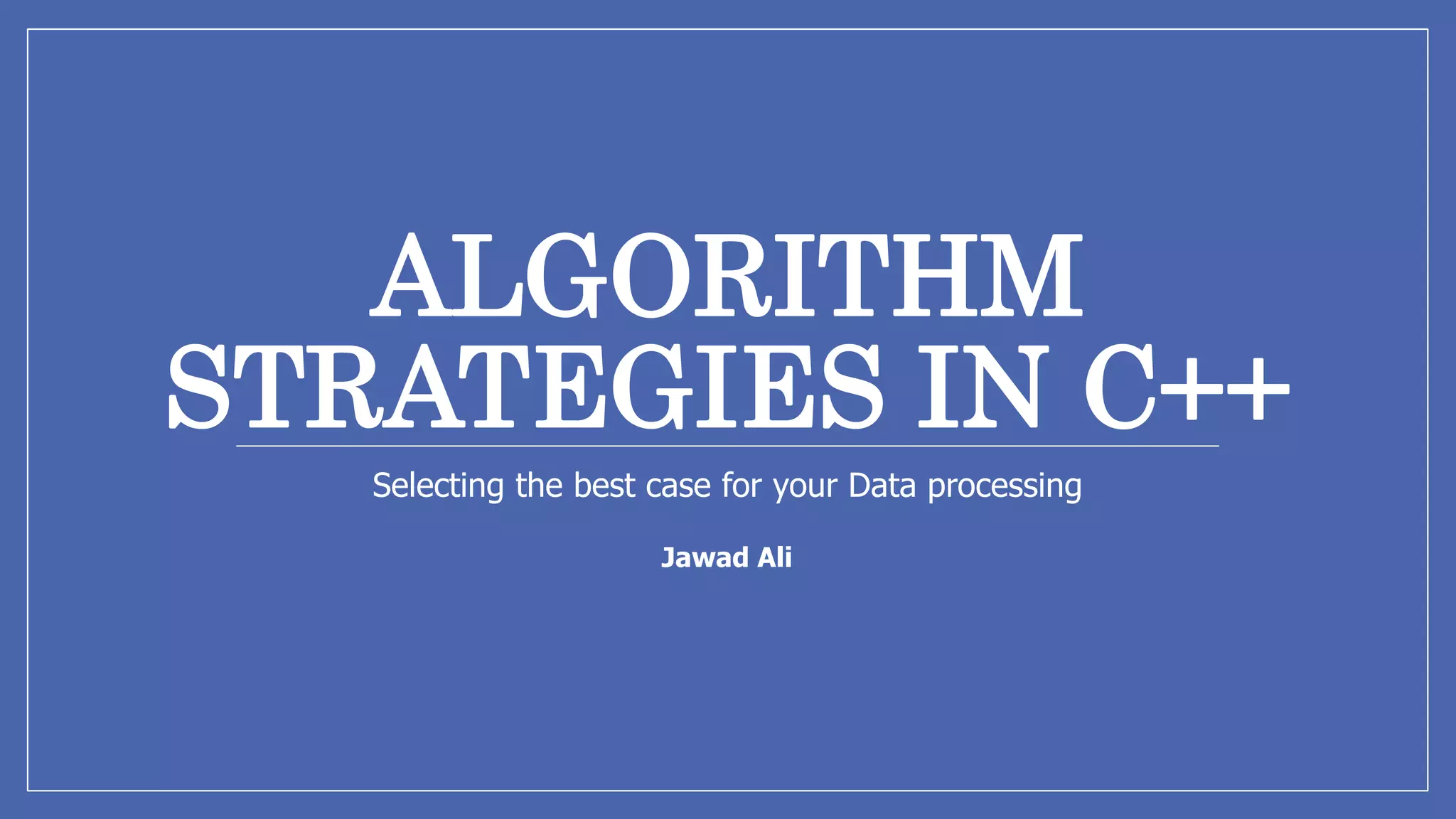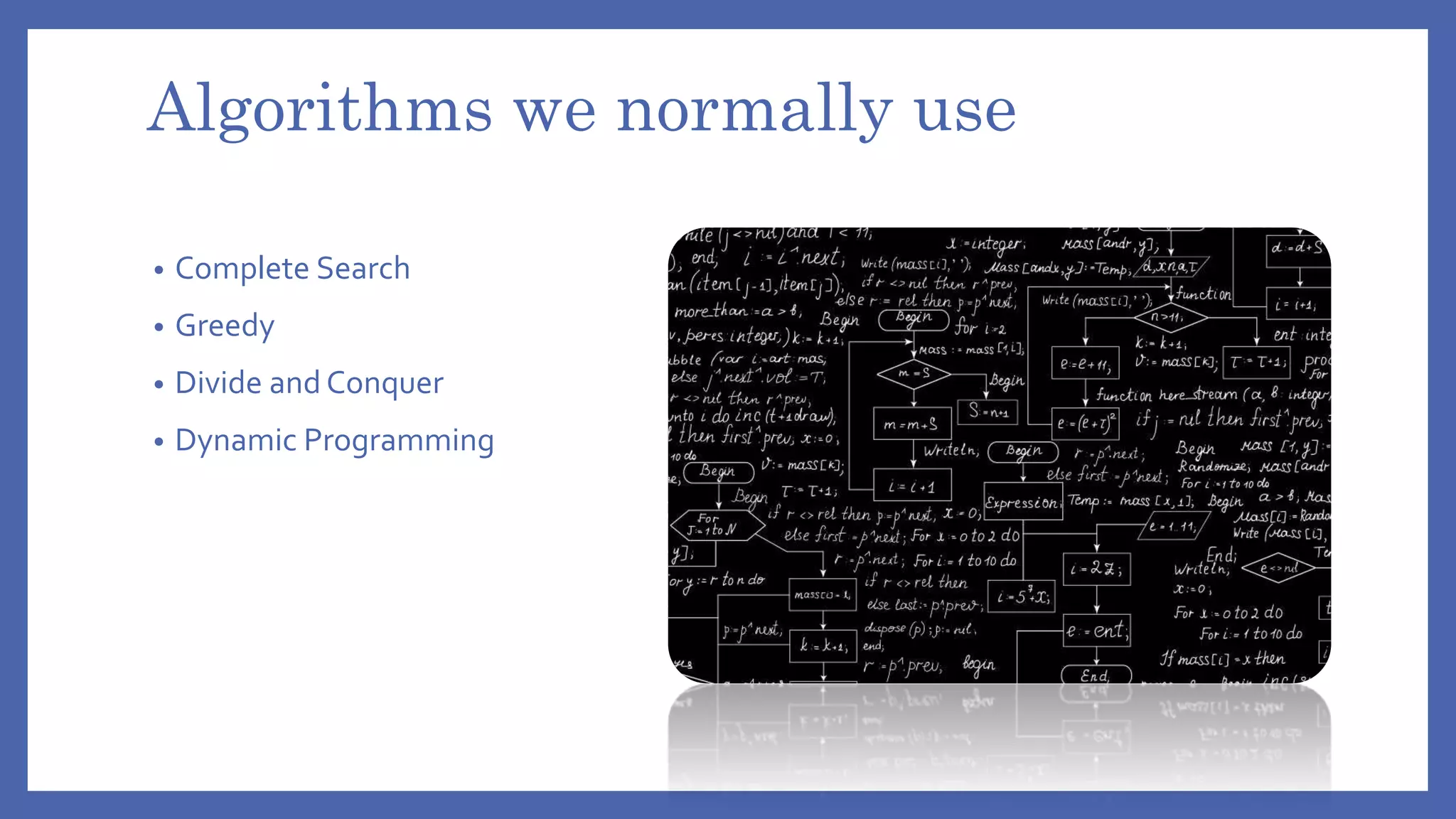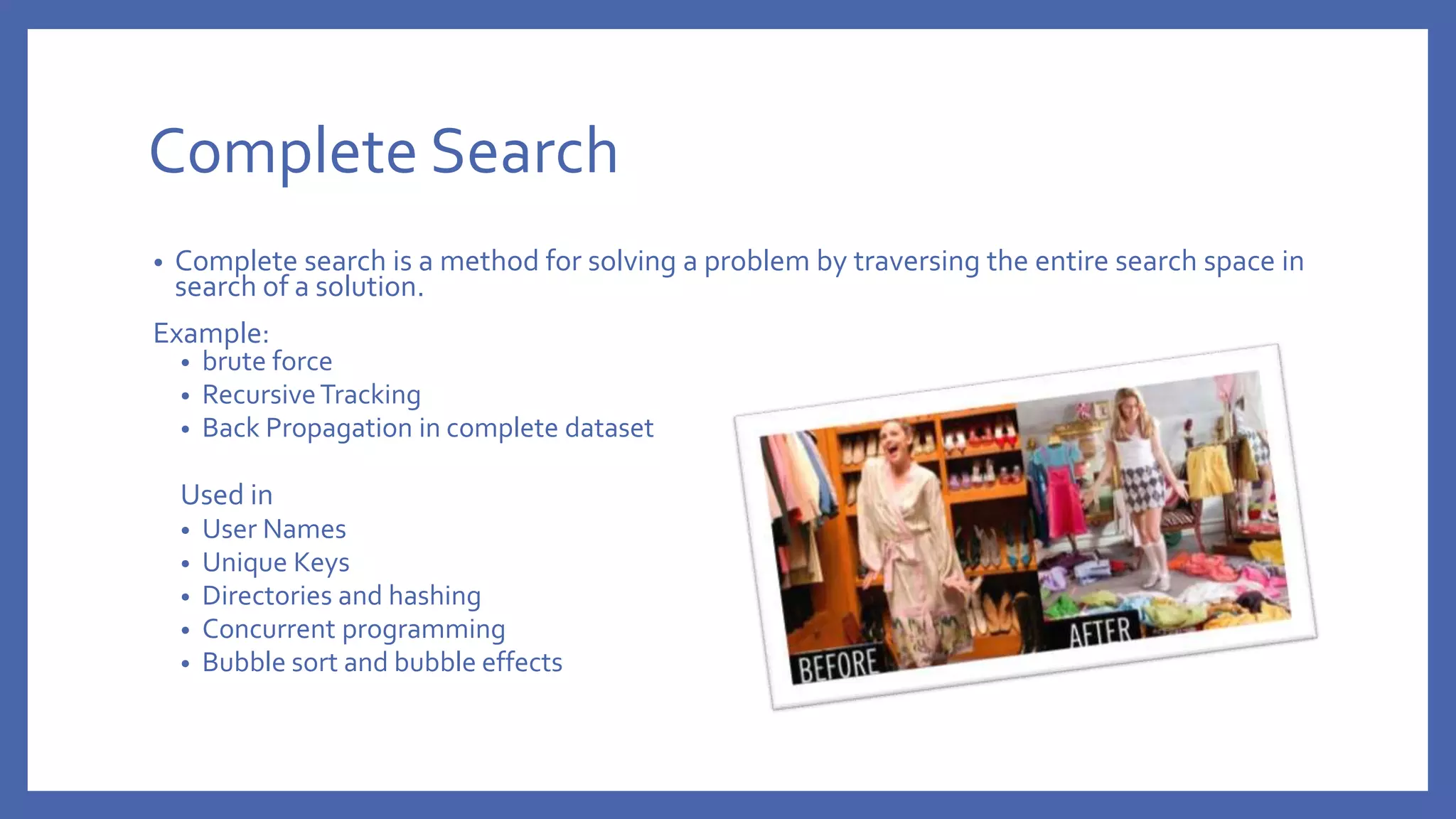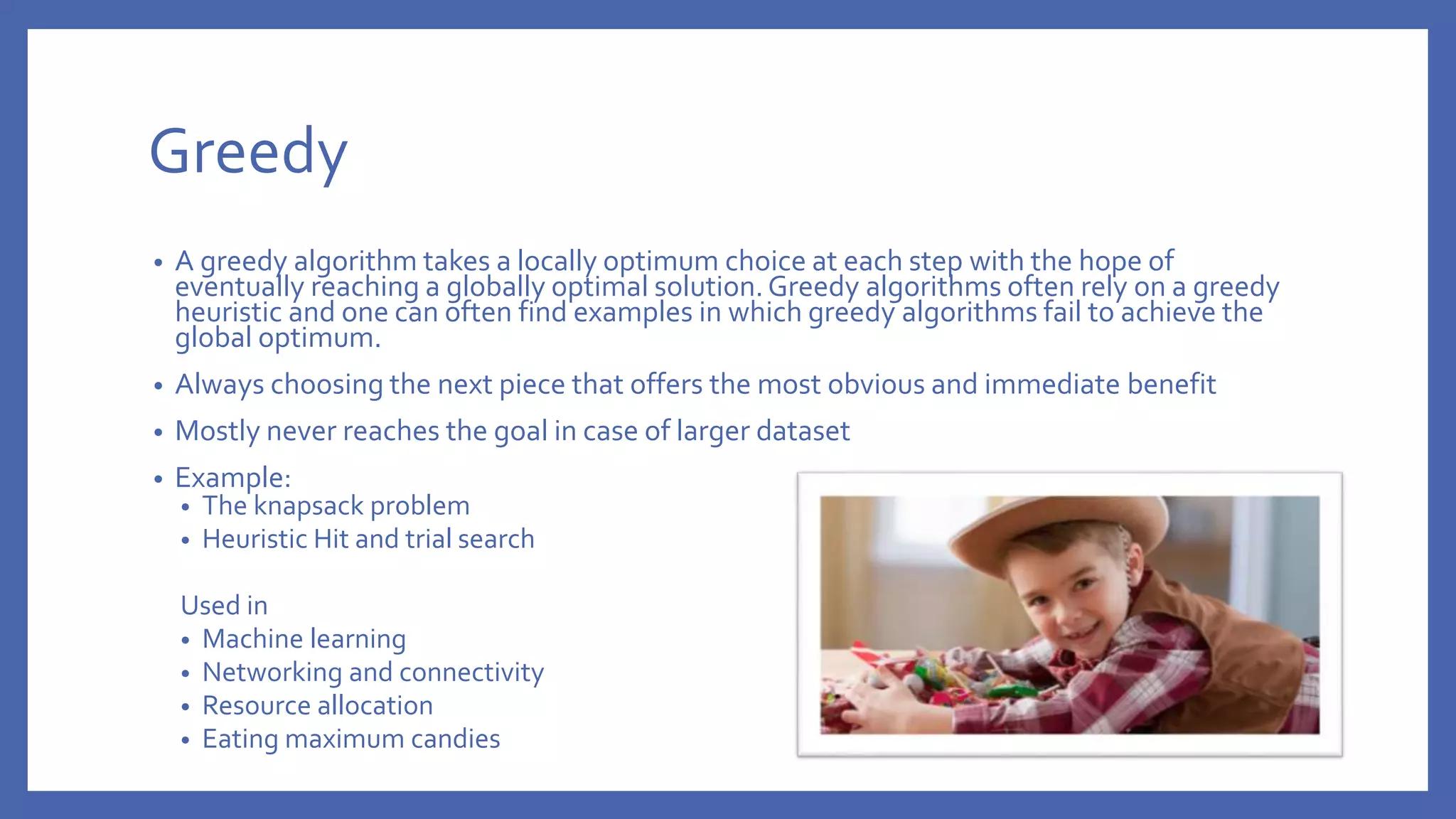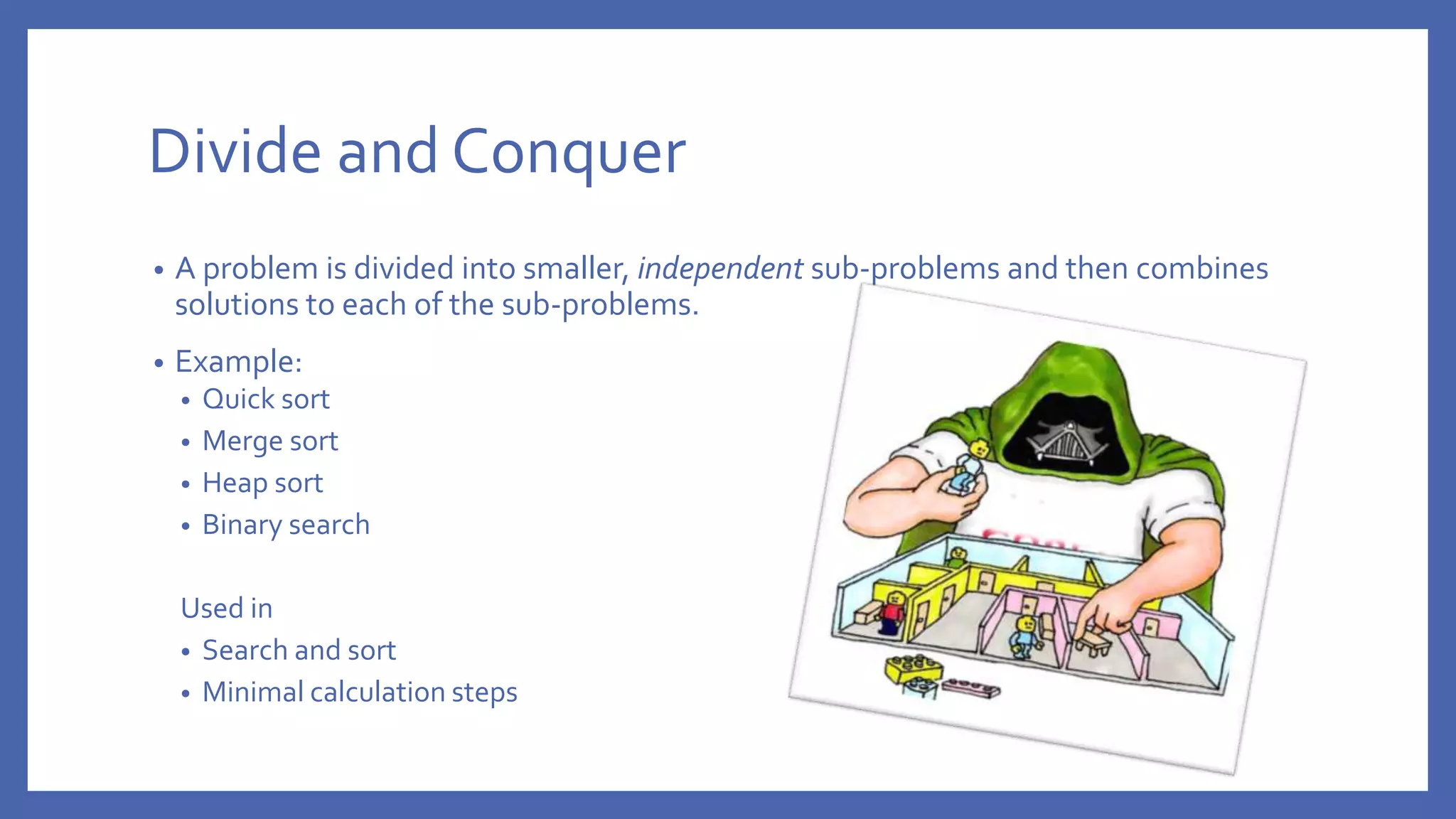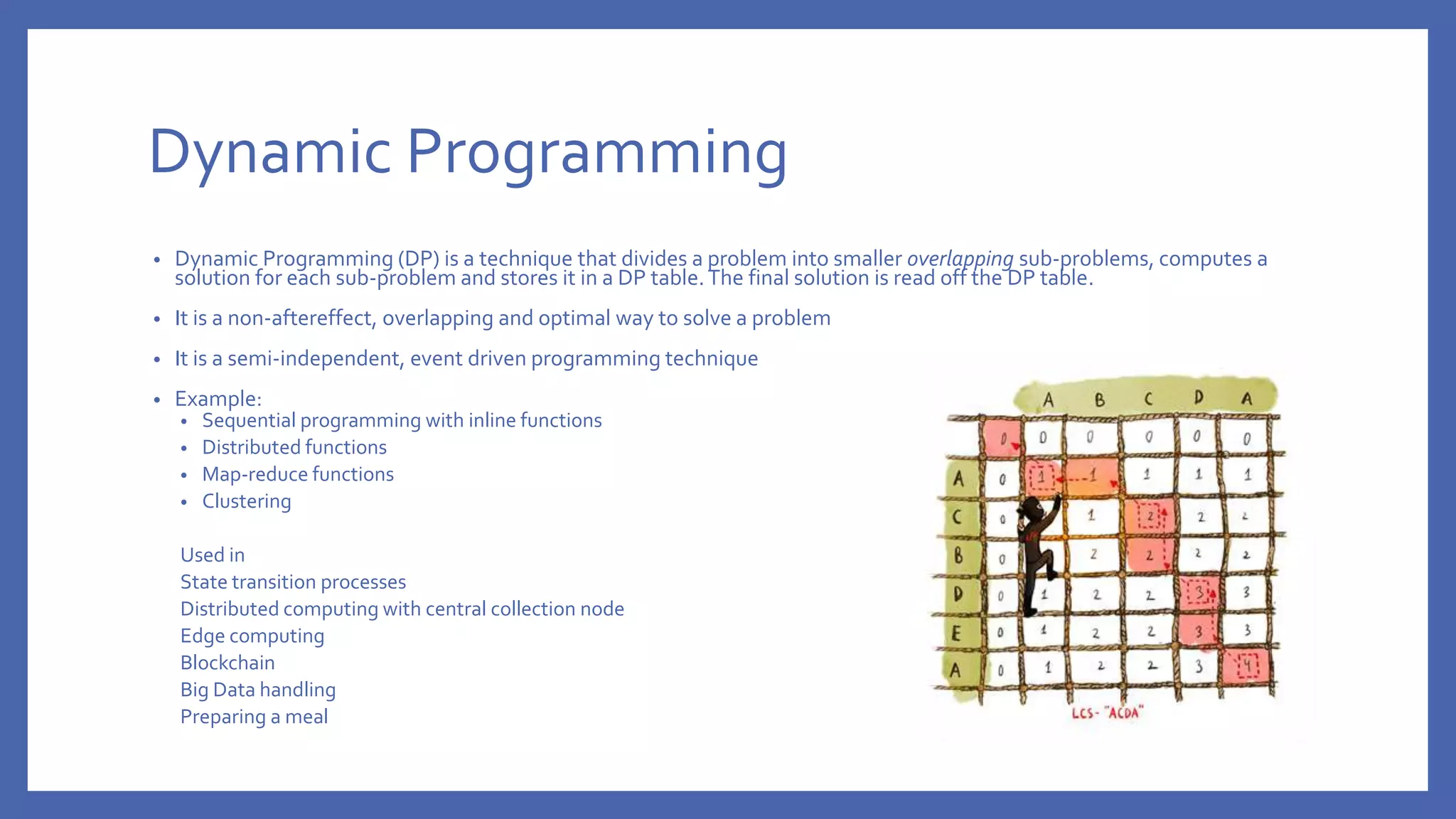The document discusses various algorithm strategies in C++ for data processing, including complete search, greedy algorithms, divide and conquer, and dynamic programming. Each strategy is explained with examples and applications, highlighting their strengths and limitations. The text emphasizes the importance of selecting the appropriate algorithm based on the problem at hand.
